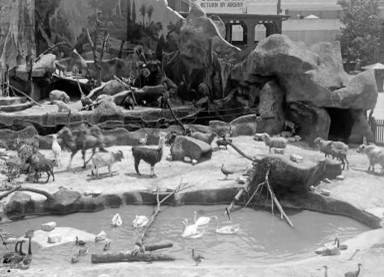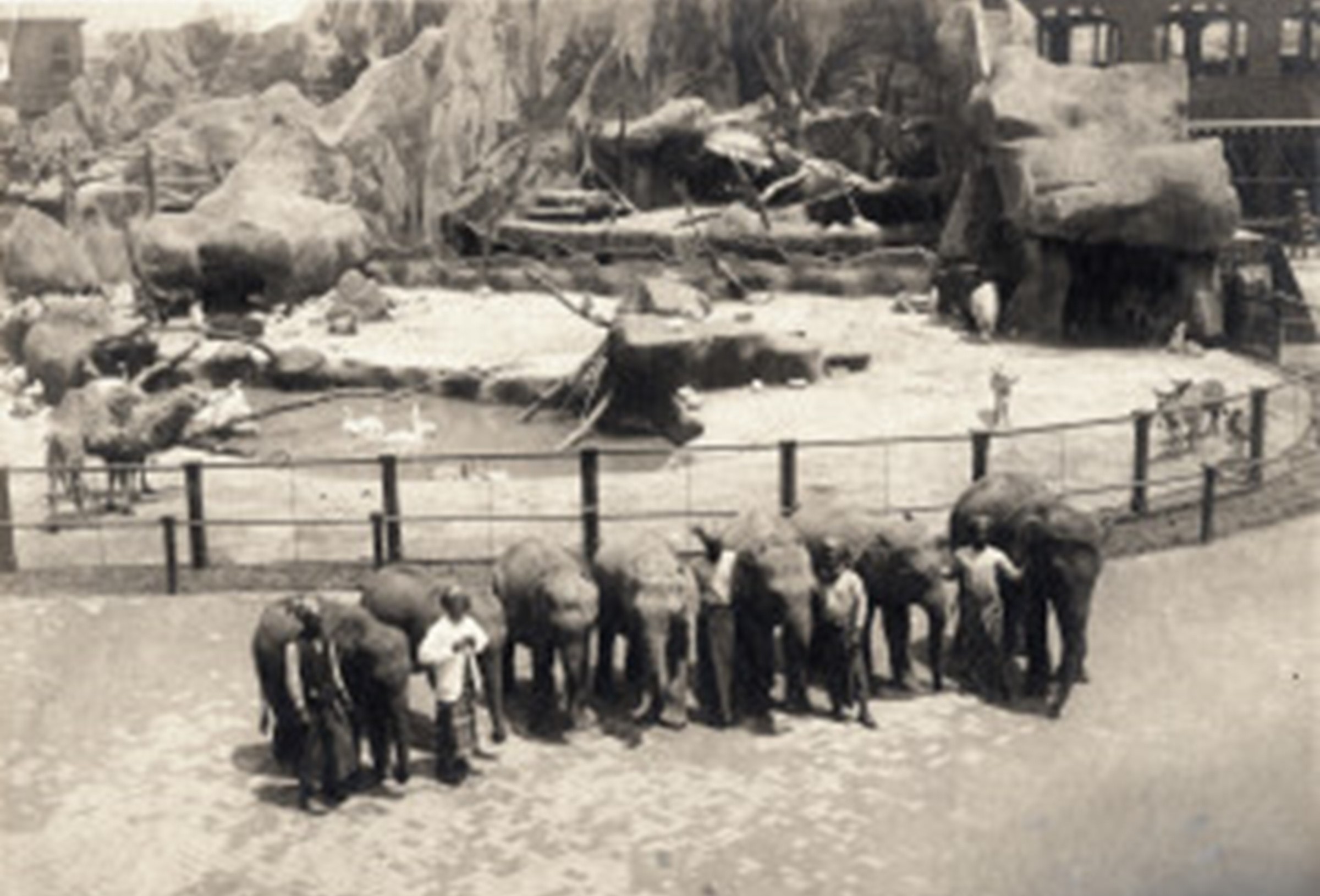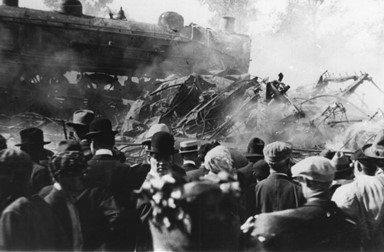By Ron Becker, Class of 2019
In the spring of 1893, a ship sailed from England with a cargo of lions, tigers, panthers, bears, boarhounds, and other exotic animals—its destination the Columbian Exposition in Chicago. There, Carl Hagenbeck intended to demonstrate his humane method of training animals and promote his trade in wild animals.

The performances were held in a building designed by Joseph Lyman Silsbee. Hagenbeck’s Arena was at the east end of the Midway Pleasance, just outside the main exposition. The central show area was said to hold approximately 4,500 spectators. For a 50¢ admission you got to see a fabulous show.


 According to a description in a souvenir pamphlet, the main attraction consisted of the following twelve acts:
According to a description in a souvenir pamphlet, the main attraction consisted of the following twelve acts:
- The Bear on the Barrel
- Tigers on the Tricycle
- Lions on the Tricycle
- The Bear on the Tight Rope
- The Hurdle Race- Boarhounds leaping over Hurdles which are supported by Lions and Tigers
- The See Saw-Performed by Lions, Tigers, Panthers and Bears
- The Zoological Staircase- Comprising Lions, Tigers and Boarhounds
- The Bengal Tiger on the Rolling Globe (Exhibit 8)
- Bear on the Rolling Globe- walking and rolling same standing on his hind legs
- Steeple Chase of the Boarhounds- Leaping over living hurdles of Lions and Tigers
- Triumphant Drive of the Lion Prince- Dressed in Royal Robes and Crowned, drawn in his chariot by two Bengal Tigers and having two Boarhounds as footmen
- The Great Zoological Pyramid- Consisting of Lions, Tigers Panthers, Bears and Dogs
Hagenbeck would also exhibit at the 1904 Louisiana Purchase Exposition in St. Louis. There, he included elephants and animals shown in dioramas depicting various biogeographical habitats.
These animals formed the nucleus of the subsequent Carl Hagenbeck’s Wild Animal Circus that toured the United States. In 1907, Hagenbeck sold his circus to Benjamin Wallace who formed the Hagenbeck-Wallace Circus. At that time, it was the second-largest circus in America next to the Ringling Brothers and Barnum & Bailey Circus.

The Hagenbeck-Wallace Circus was plagued with many setbacks, the most terrible of which was “The Great Circus Train Wreck of 1918.” A section of the Hagenbeck-Wallace Circus train suffered a malfunction, a hot box, and was parked on the tracks outside of Hammond, Indiana. Signals were activated and flares put out indicating the danger ahead. A troop train consisting of empty Pullman cars used to transport troops to ports of embarkation was following. At approximately 4 a.m. on June 22, 1918, the engineer of the troop train had fallen asleep at the controls and, ignoring all the signals and shouted warnings, sliced through the caboose and last four cars of the circus train at speed before leaving the tracks and ending upright nearby.
Many of the circus people were killed outright. Others died horrifically when the splintered wooden circus cars caught fire as the kerosene lanterns used to light the cars were broken. The toll was 86 killed and another 127 injured.
A year earlier, the Showmen’s League of America, a fraternal group of circus people, rodeo performers, and other showmen, had purchased a burial site for its members in Woodlawn Cemetery in the Chicago suburb of Forest Park. The site includes five elephant statues with a foot on a ball and with trunks lowered, a symbol of mourning. The site is called Showmen’s Rest.

56 of those who died in the crash were buried in a mass grave in Showmen’s Rest. Each was given an individual headstone. Because of fire charring or poor record-keeping, some of the roustabouts having been hired only days before, many of the bodies could not be identified. Their graves are marked as Unknown Male or Unknown Female. Others are marked by their nickname or circus role:” Smiley”, “Baldy” and “4 Horse Driver.”


Contrary to urban myth, there are no animals buried at Showmen’s Rest. The section of the train carrying animals had gone on ahead. However, on a quiet night you might hear lions roar. They would be from the nearby Brookfield Zoo and housed in enclosures pioneered by Carl Hagenbeck.

Illinois was the first state to ban the use of elephants in entertainments. Many other jurisdictions have passed additional laws concerning wild animals. The reconstituted Ringling Brothers and Barnum & Bailey Circus features no animal acts. It is most unlikely that we will ever see the type of animal extravaganzas seen by those in 1893.

CLICK HERE for more stories on The Bridge.












Great article! Thank you!
Who knew? Thanks for another enlightening and informative article, Ron!
Thank you Ron!
What an amazing story. thanks, Ron, for chasing this all down. We talk about Hagenbeck’s Animal Show on the Devil in the White City but you go way beyond that. So fascinating. Thanks, again.
Thanks so much for this! Spellbinding.
Quite a story, Ron., especially the tragedy in 1918. Thanks for researching and sharing! Suzy Ruder